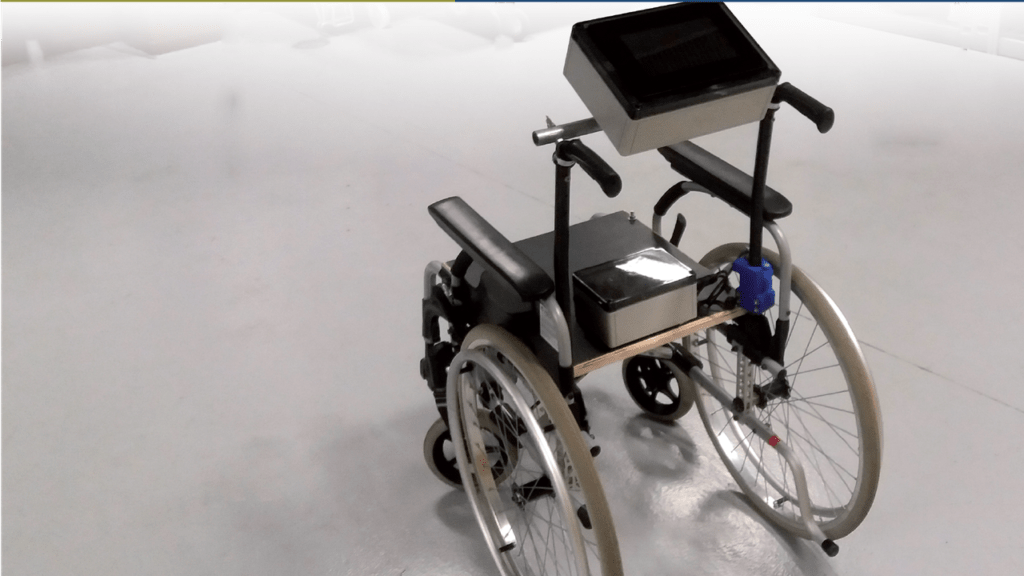The Brussels mobility agency has deployed a wheelchair on the streets of Brussels to measure the comfort and quality of pavements.
But not just any wheelchair. The ‘measuring chair’ is fitted with the latest sensor technology to allow it to scan and measure the pavement it runs over, to see if it is up to the standards required by the 2019 regional mobility plan, titled (in English) Good Move!
Walking is the most common method of transport in Brussels, accounting for one in three of all journeys. In addition, all users of other forms of transport are also at some time or other pedestrians.
There are three basic measures of what the jargon calls a ‘pedestrian facility’ – an ordinary pavement or a pedestrian zone, including squares like Flagey or Place de la Monnaie, or the newly car-free Bourse or De Brouckère.
They are flatness, skid resistance and slope. Flatness is important to prevent tripping on a rogue cobblestone. Skid resistance becomes important after snow, freezing or on some surfaces simply a shower of rain.
Slope is measured both longitudinally – if the street slopes downwards – and laterally – if the pavement slopes down from the buildings to the roadway.
The failure of any of these criteria to meet the standards set by the handbook compiled by the Belgian Road Research Centre (BRRC) means repairs. And failure means a score of less than 8/10 for main roads and avenues, and 6/10 for other roads.
Problems in any of these areas can be annoying enough for most people, but can be extremely important for older people, who risk falling and fractures, or for disabled people, for whom poor skid resistance in the neighbourhood could be tantamount to meteorological house arrest.
The idea of the measuring chair is to compile a database of the streets of Brussels, to be consulted by anyone involved in resurfacing, including local authorities, utilities like gas and electricity, and even private contractors where building work has an effect on the public footpath or ‘pedestrian facility’.
“The aim [of the database] is to determine which type of materials and which installation techniques give the best results,” commented Inge Paemen of Brussels Mobility. “But it also offers the opportunity to monitor the evolution of the quality of use in the long and medium term.”
“This measuring chair will really help us to boost comfort and to increase the proportion of journeys on foot,” added the region’s mobility minister Elke Van den Brandt (Groen).
Alan Hope
The Brussels Times

